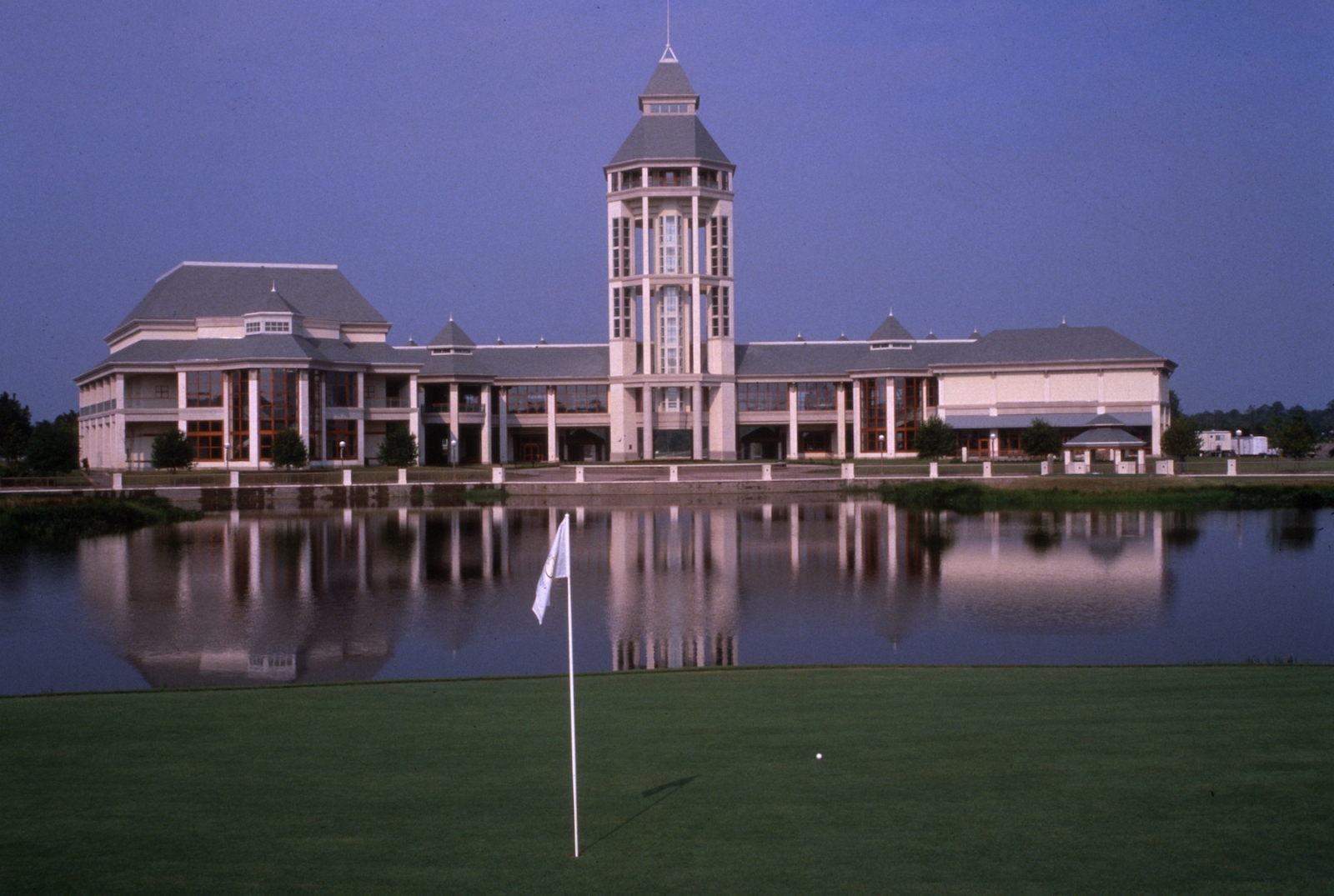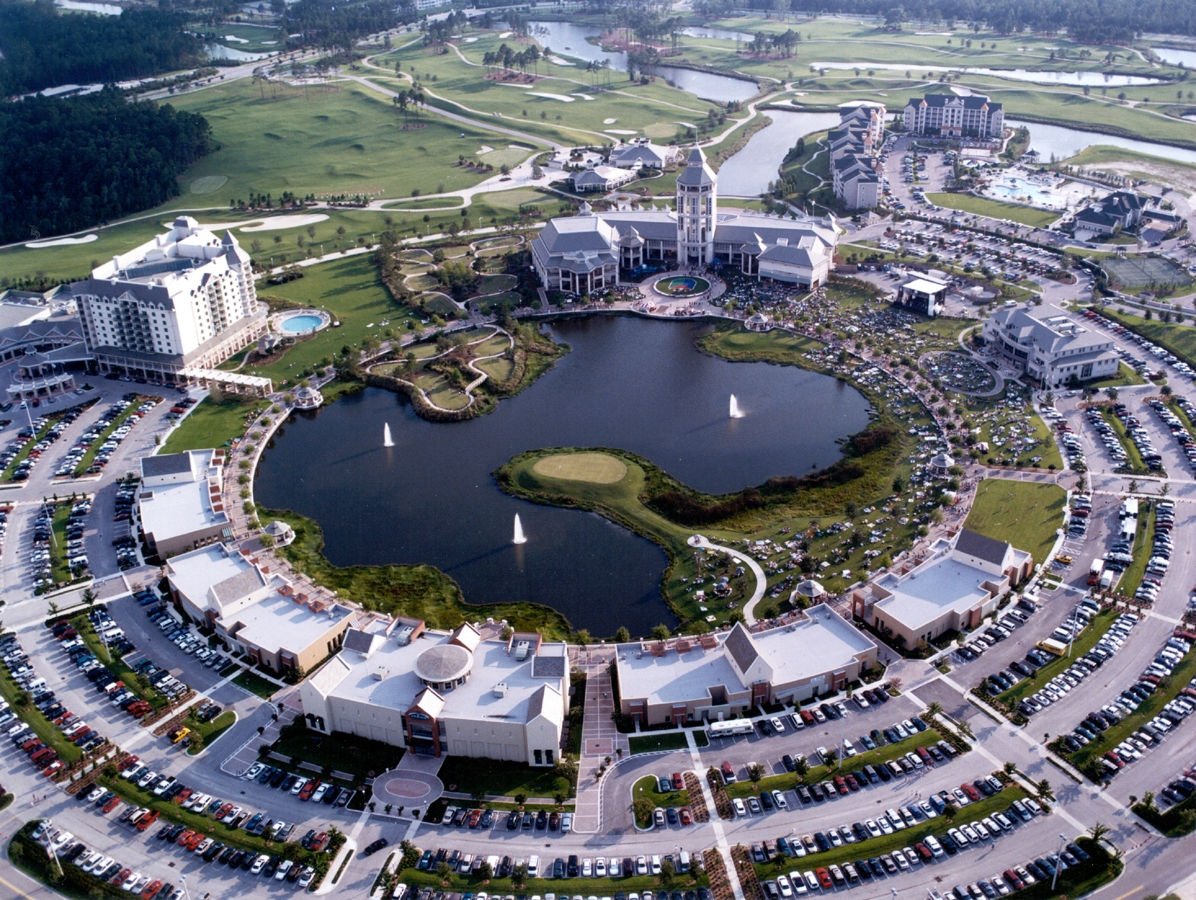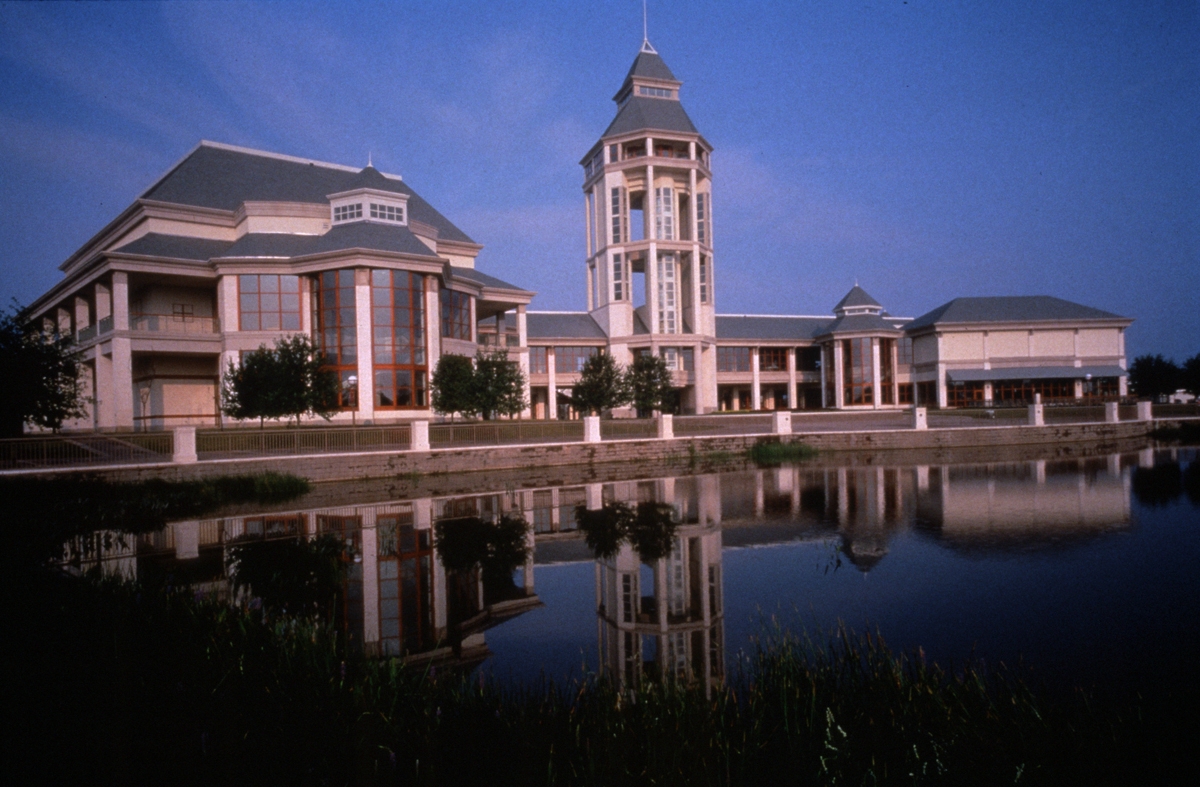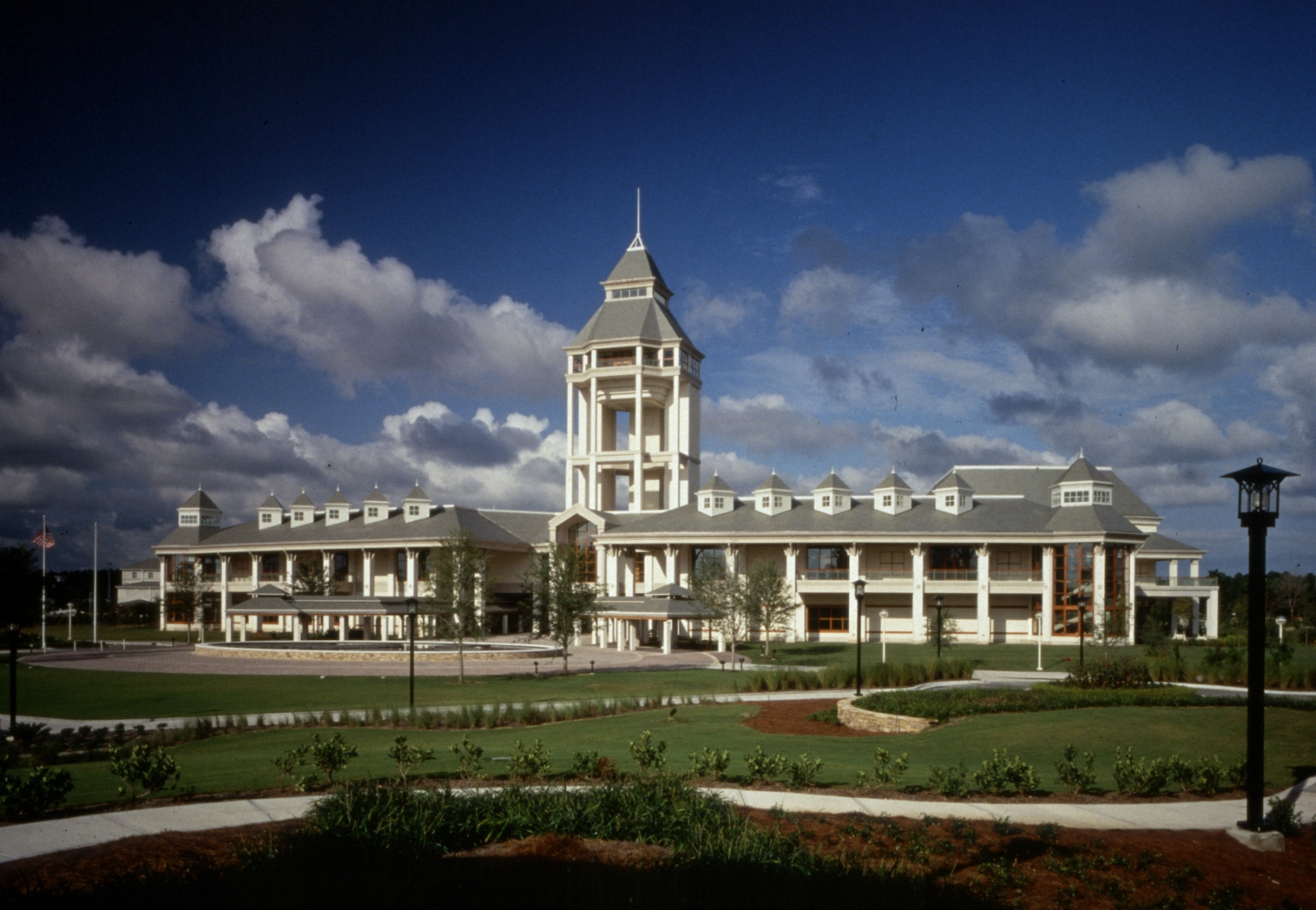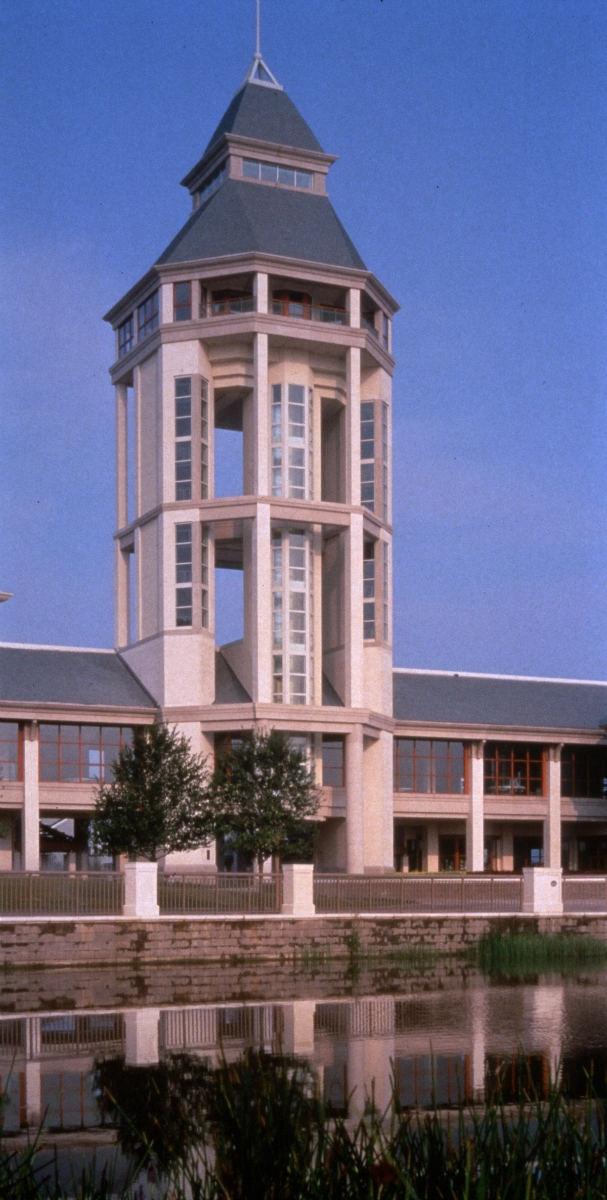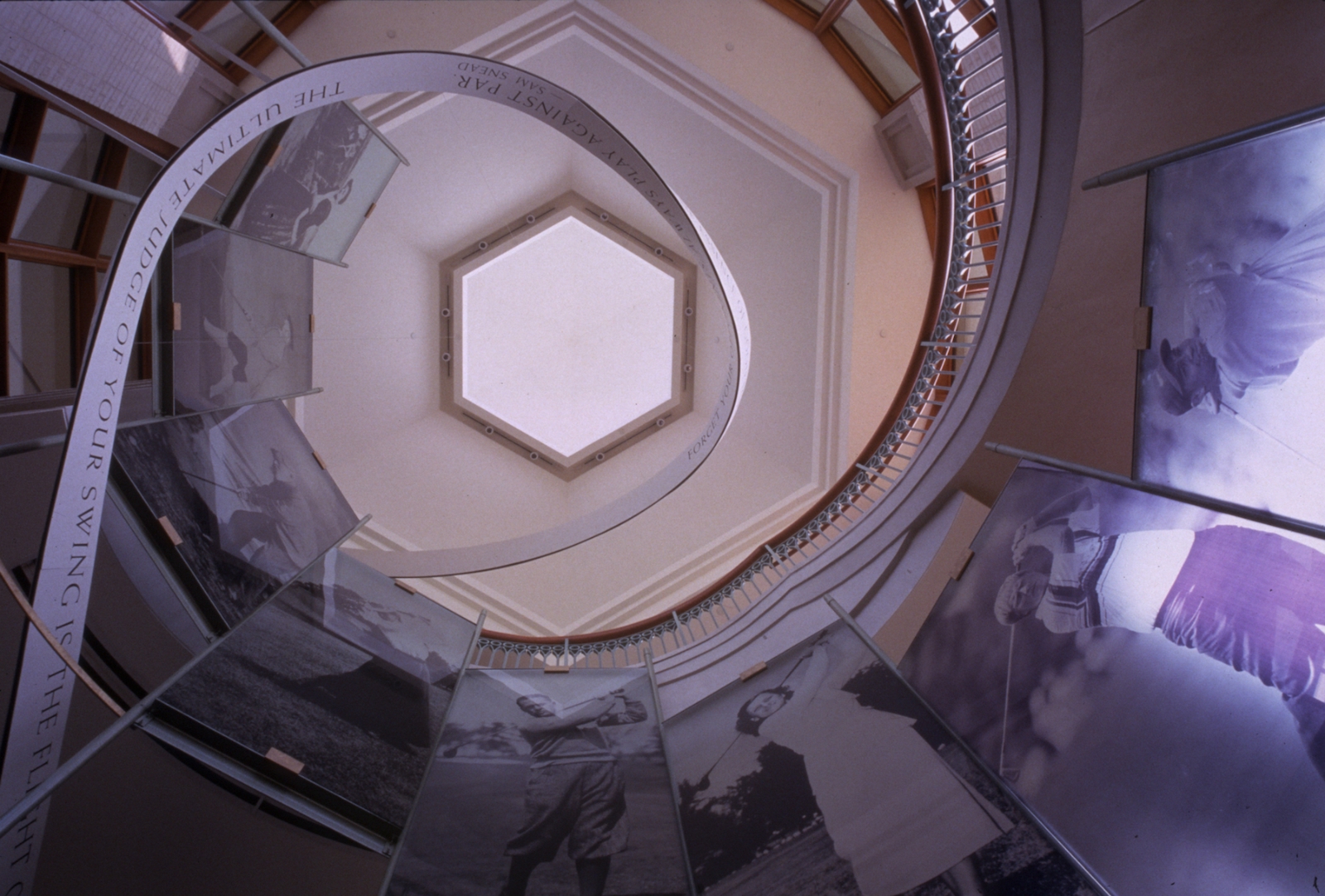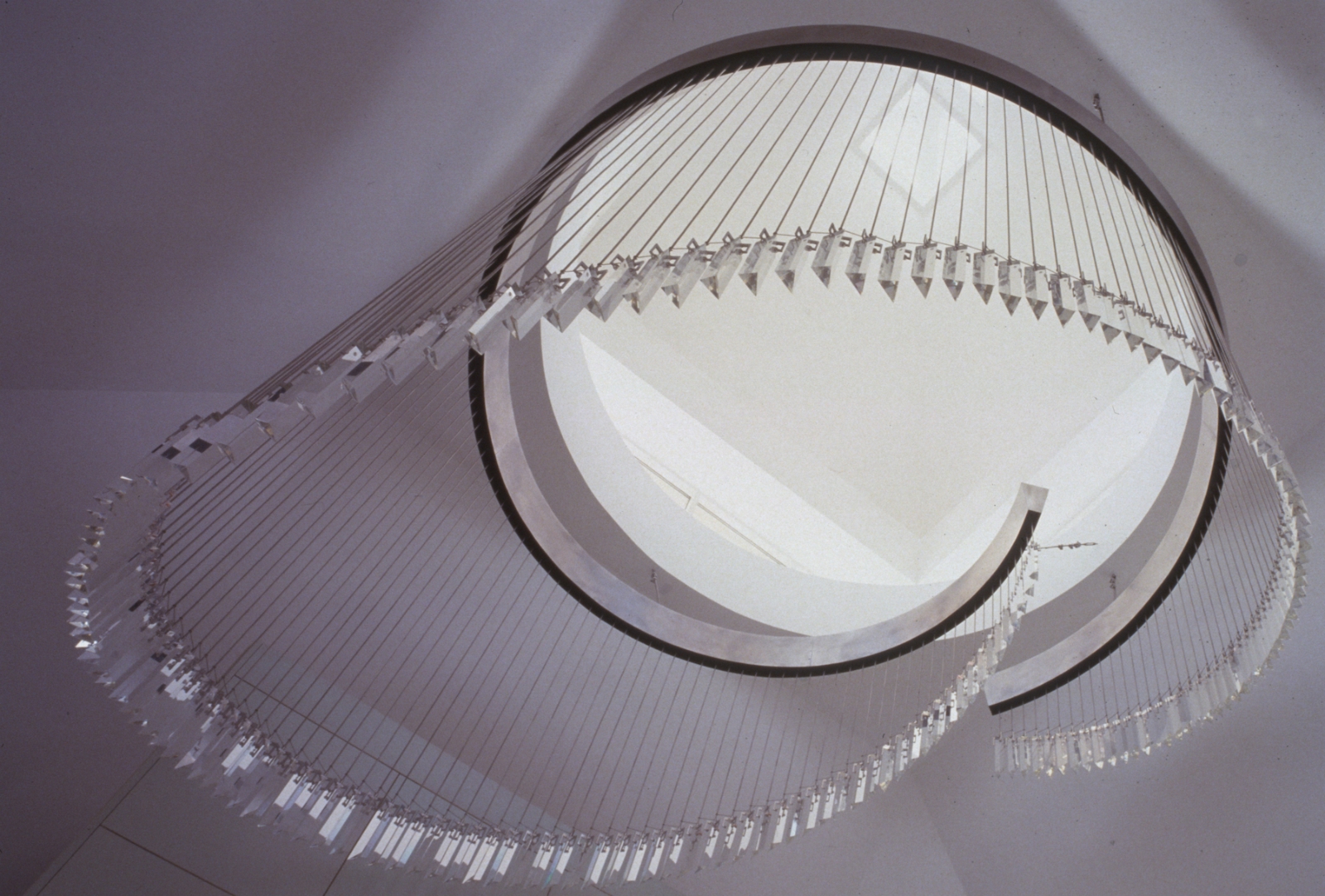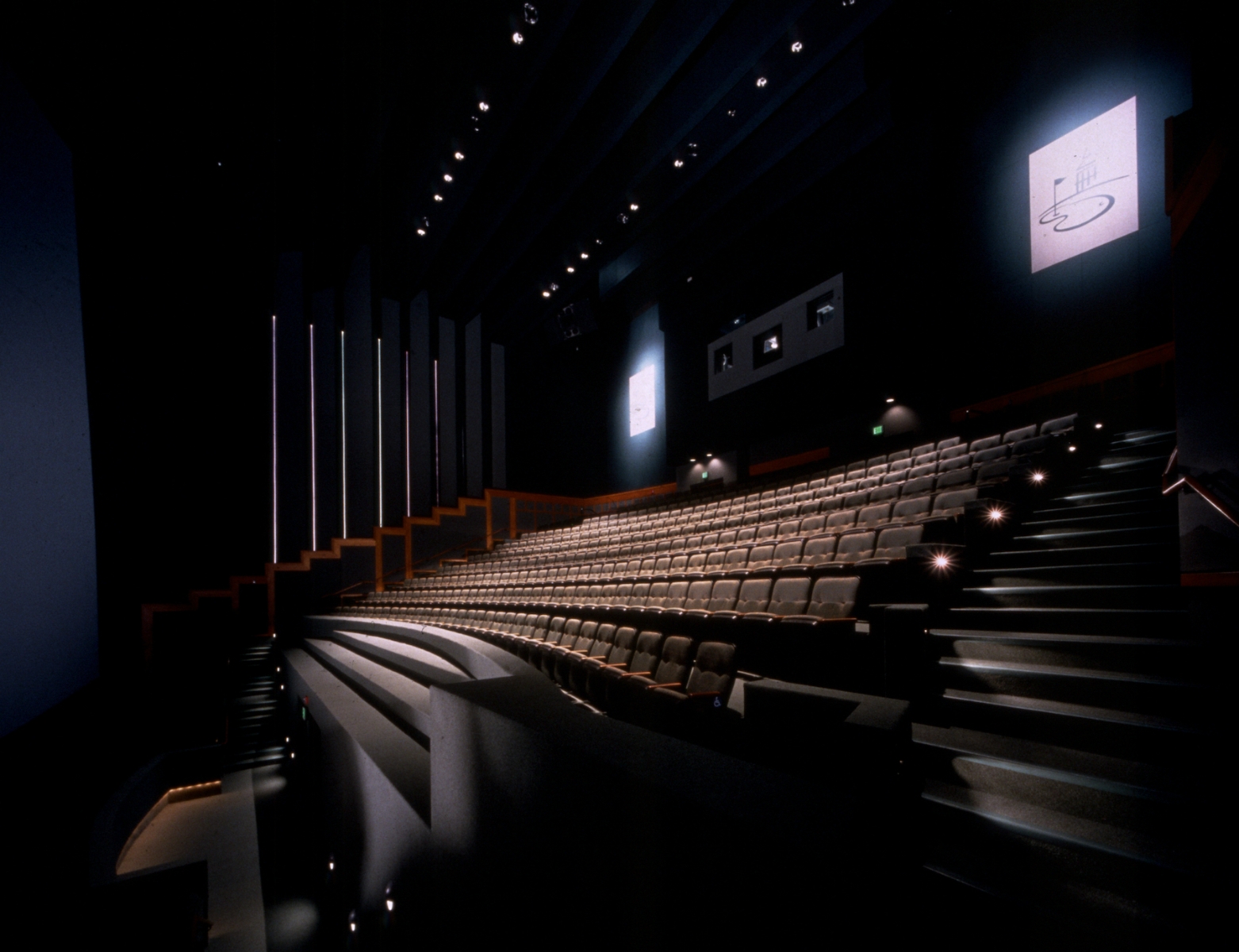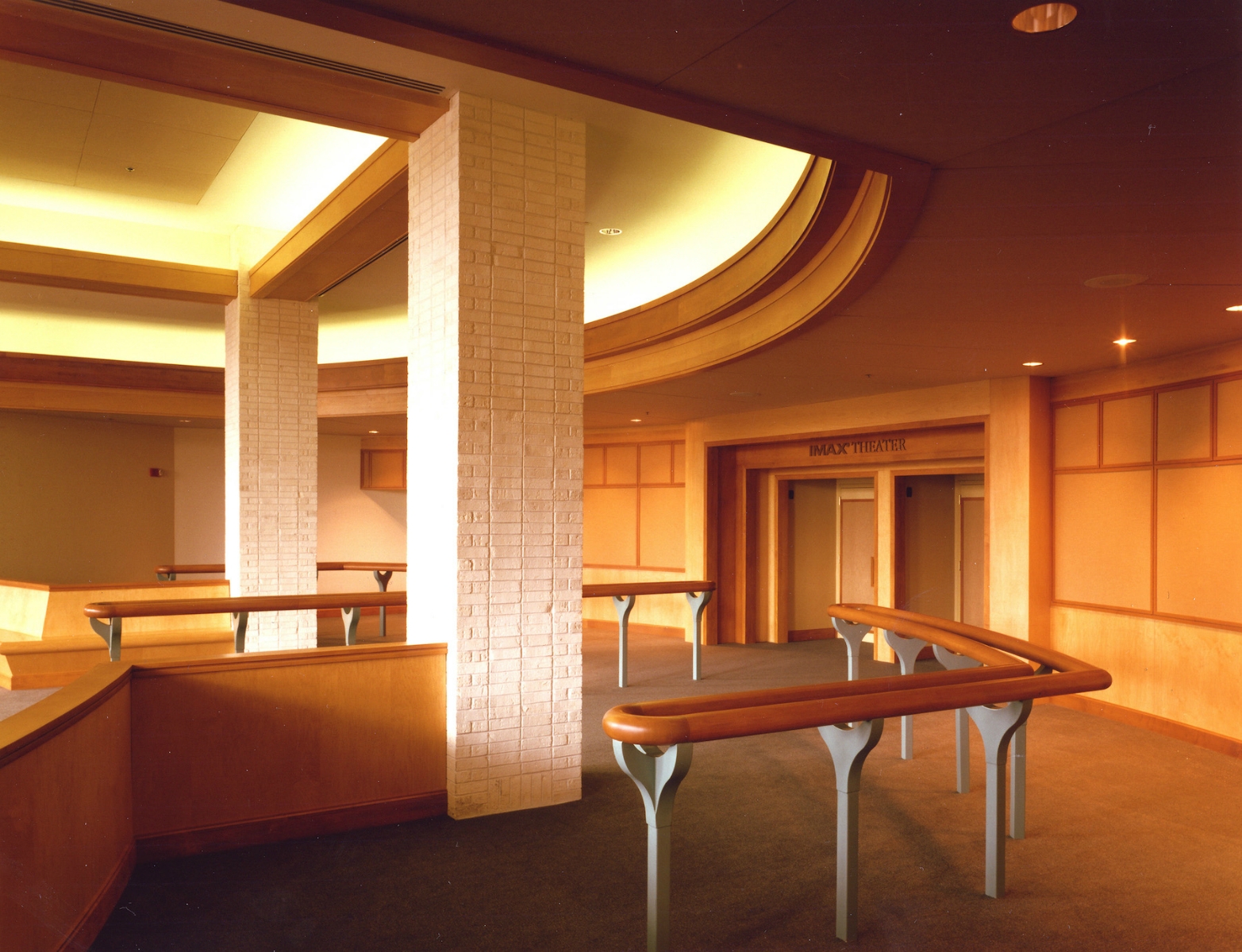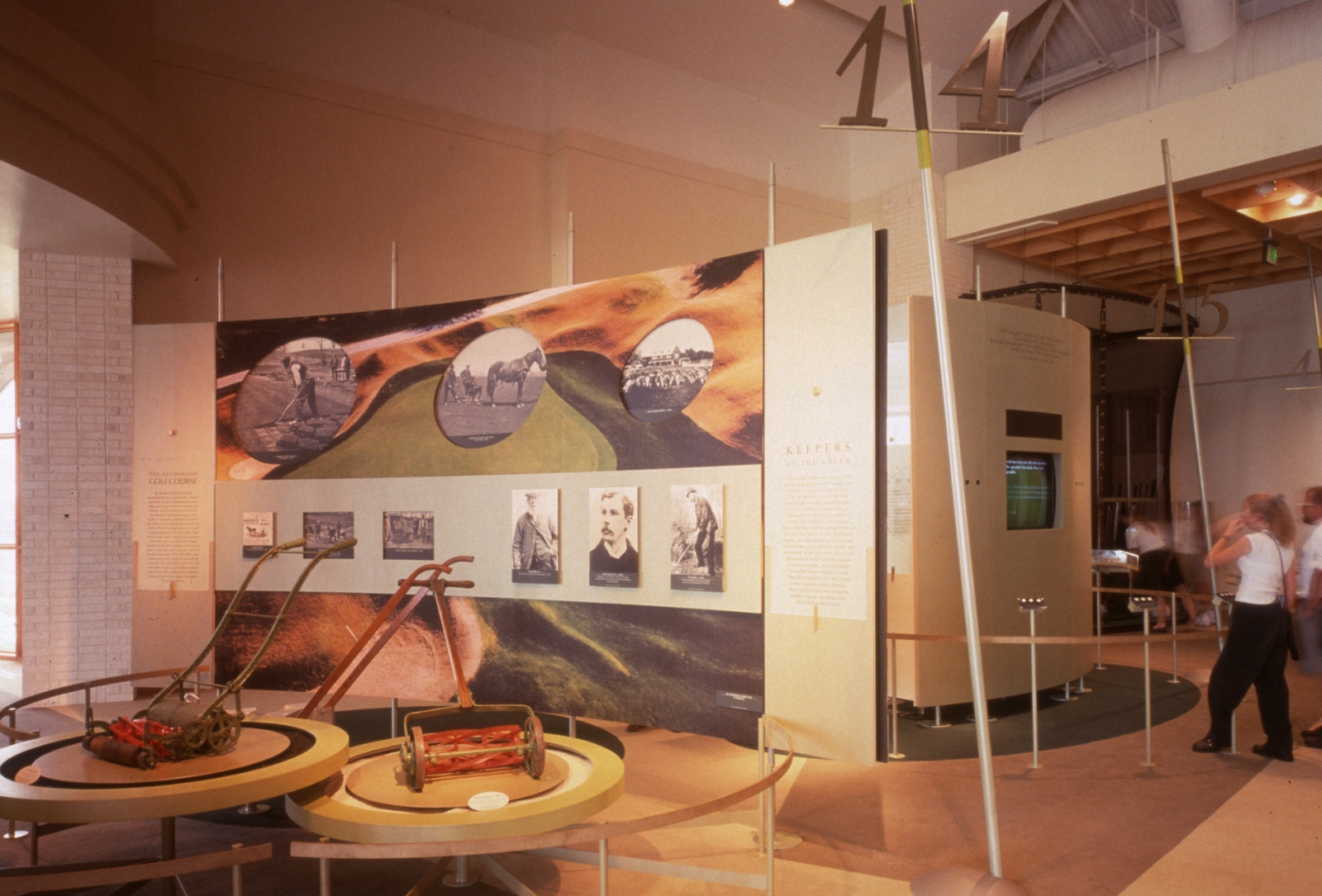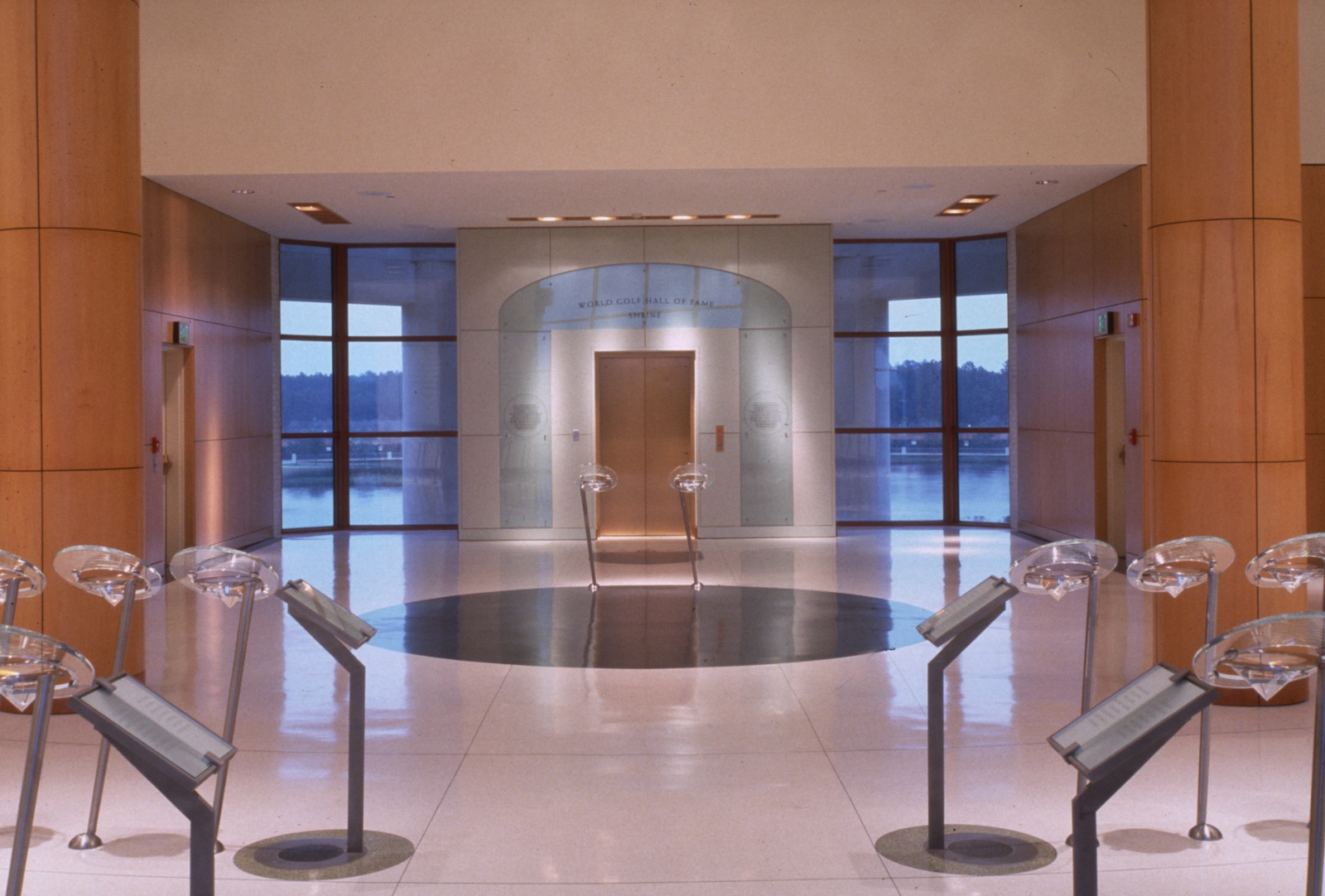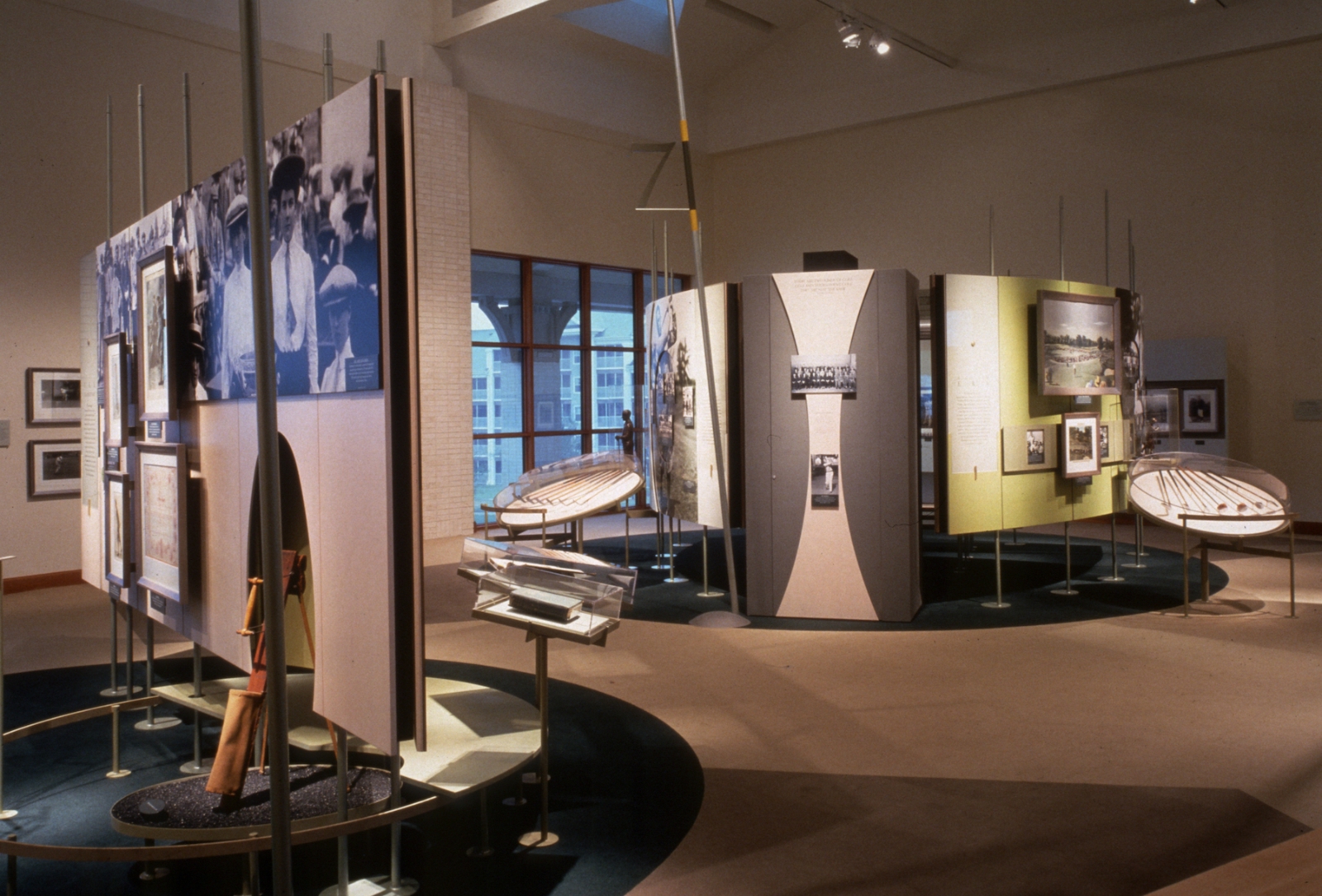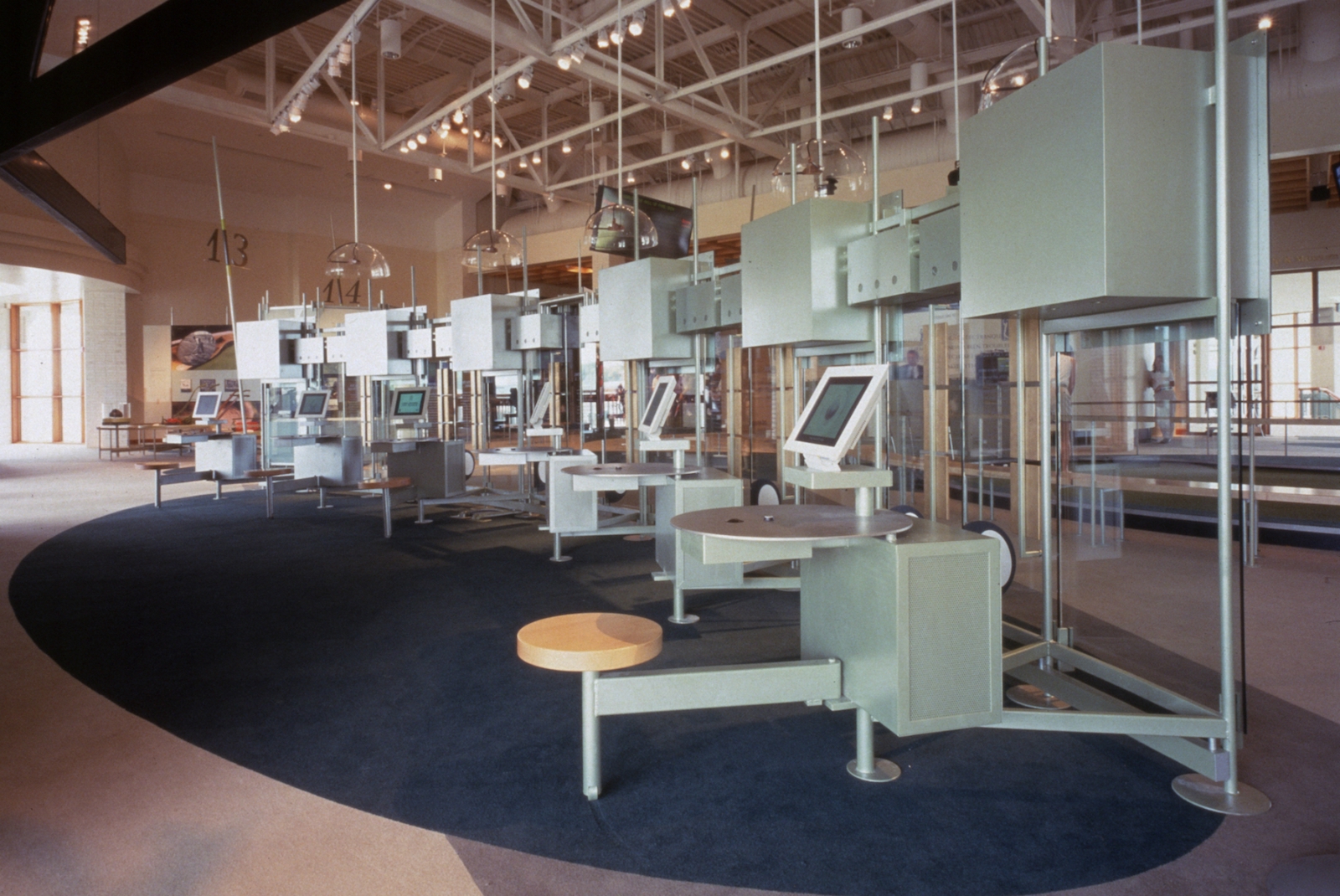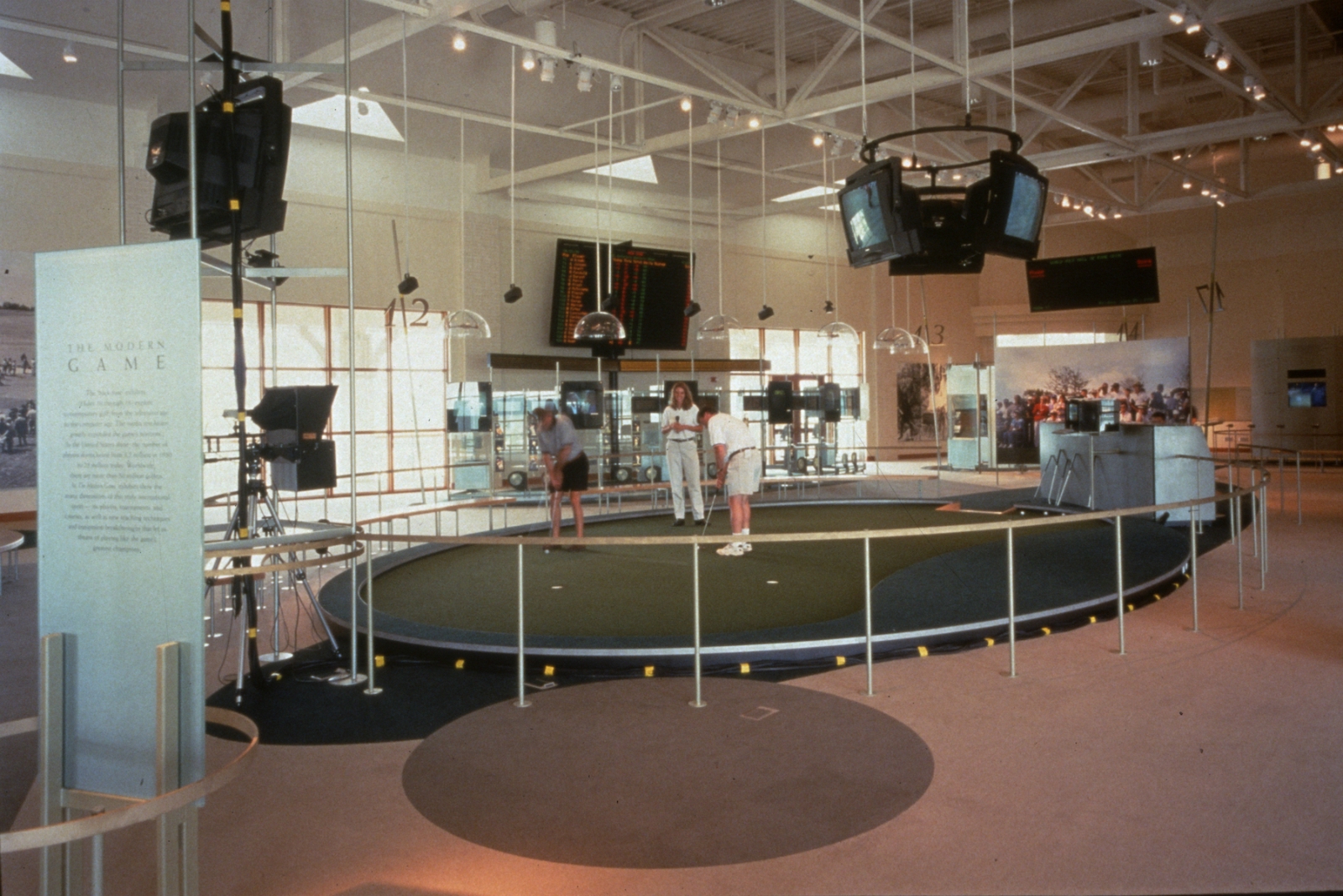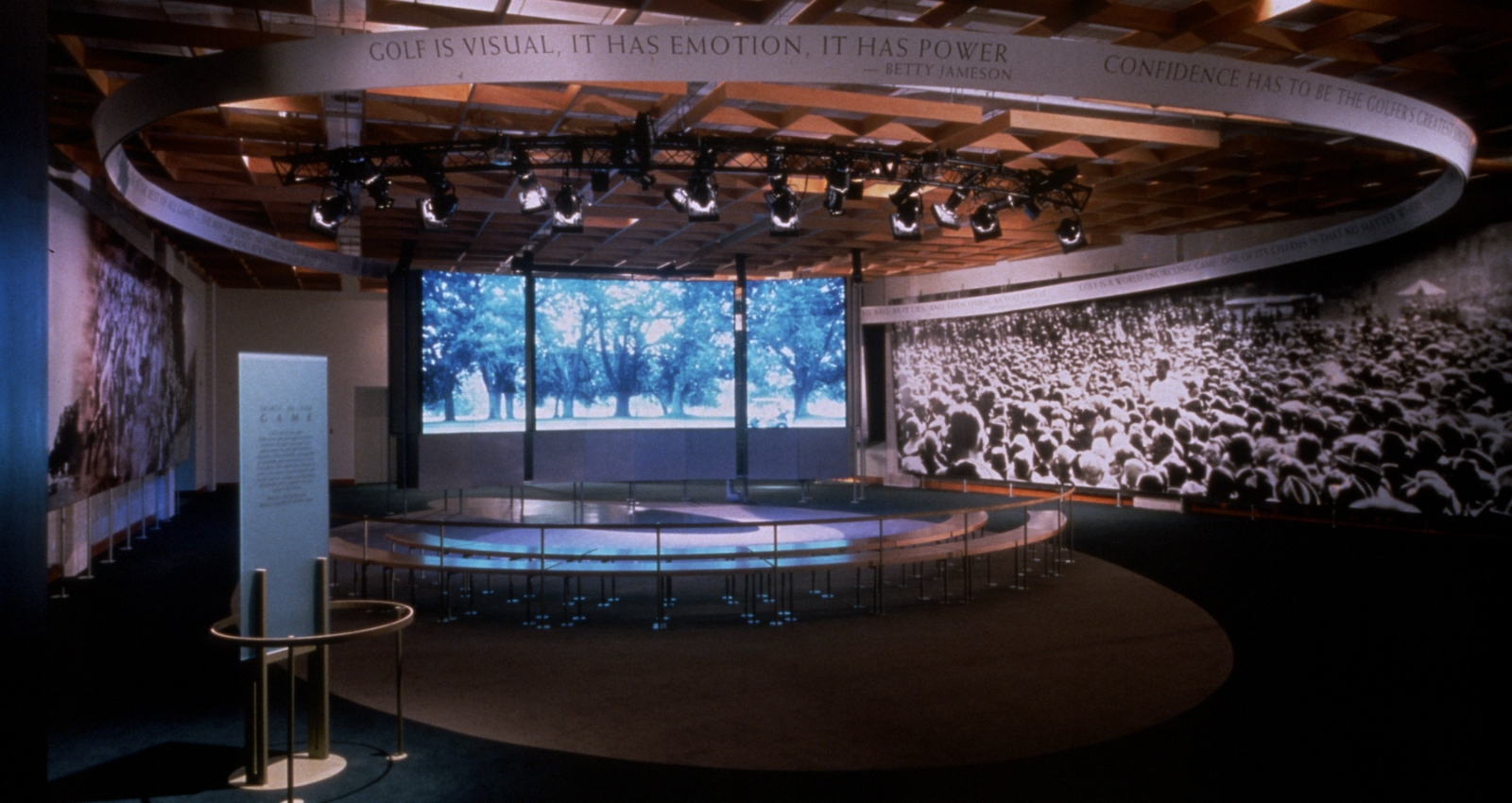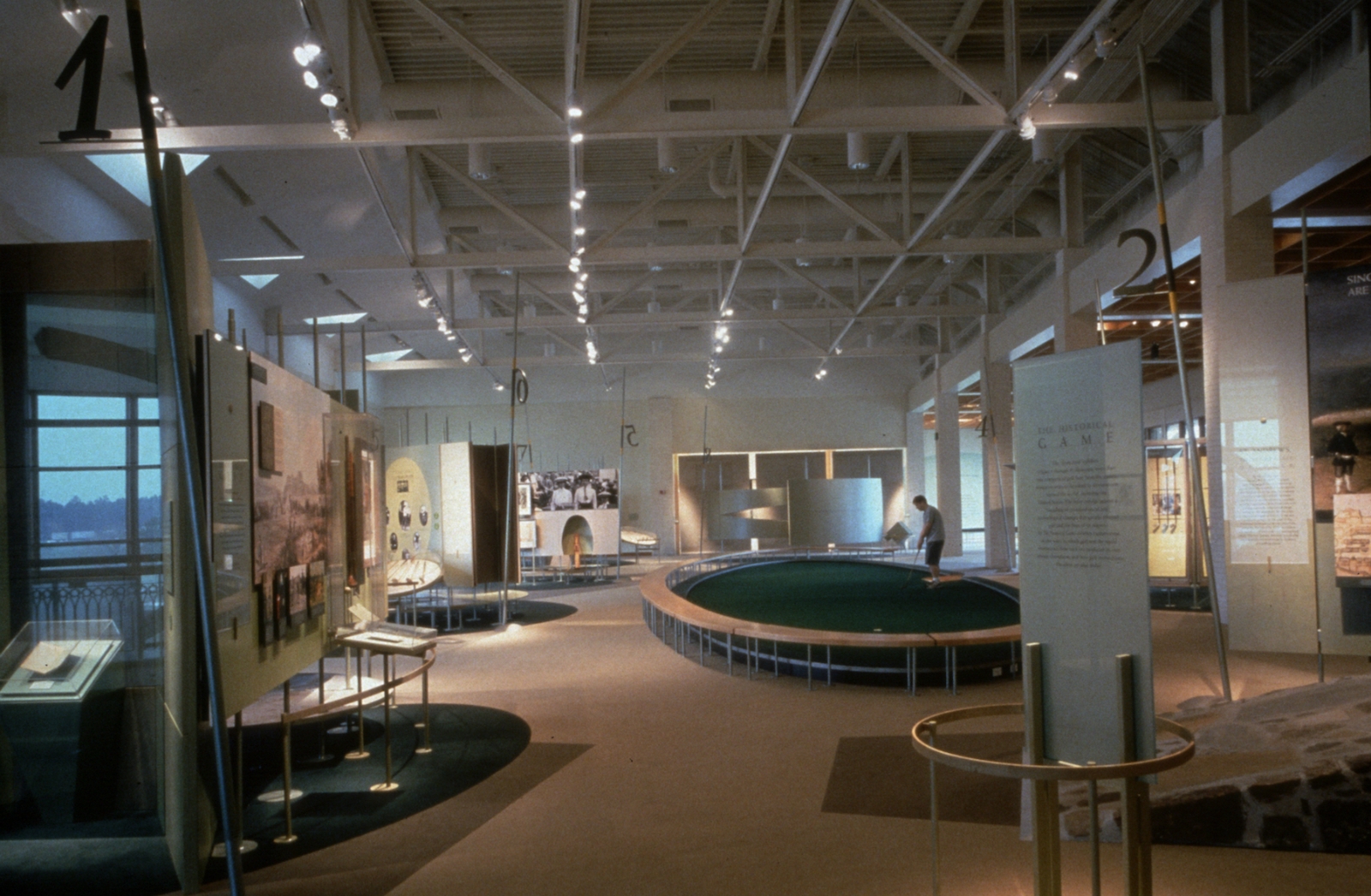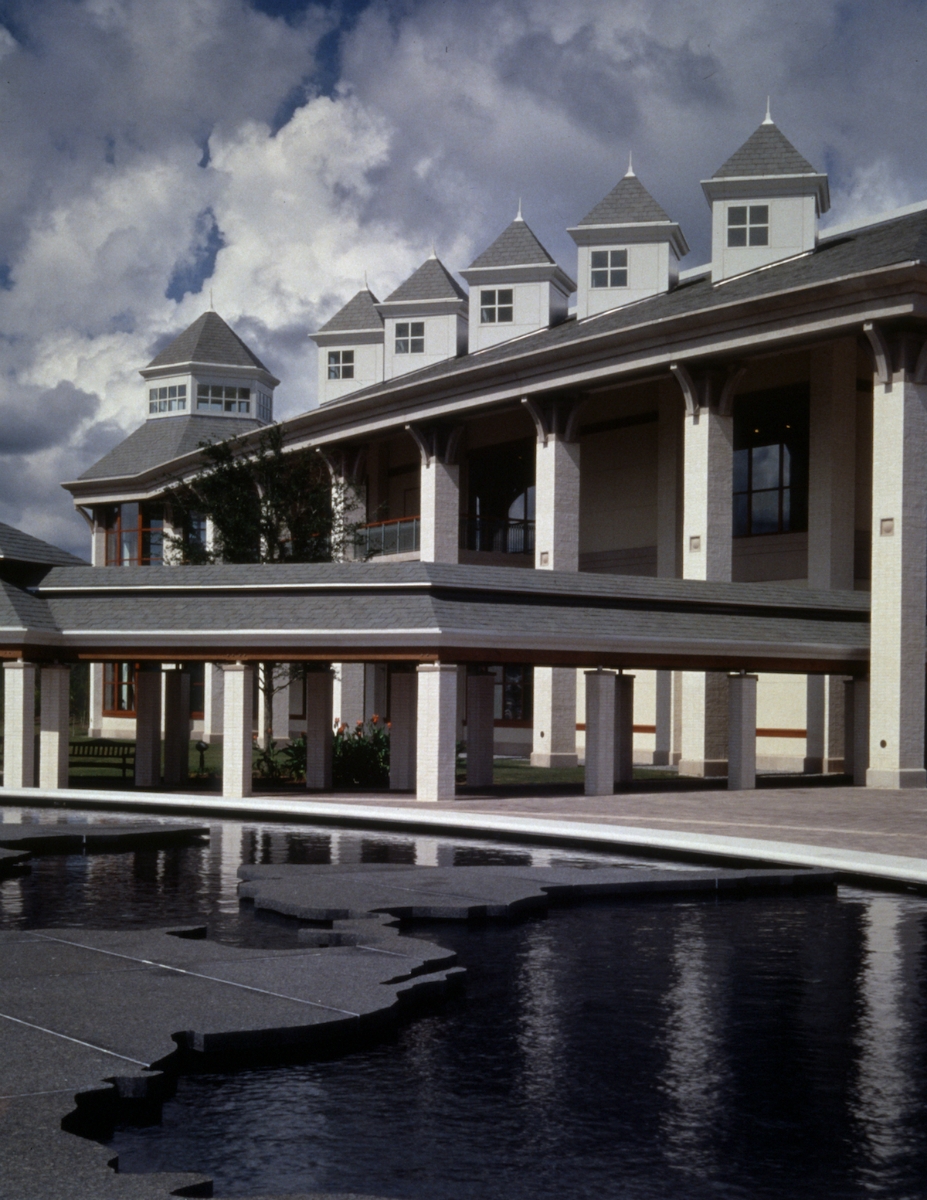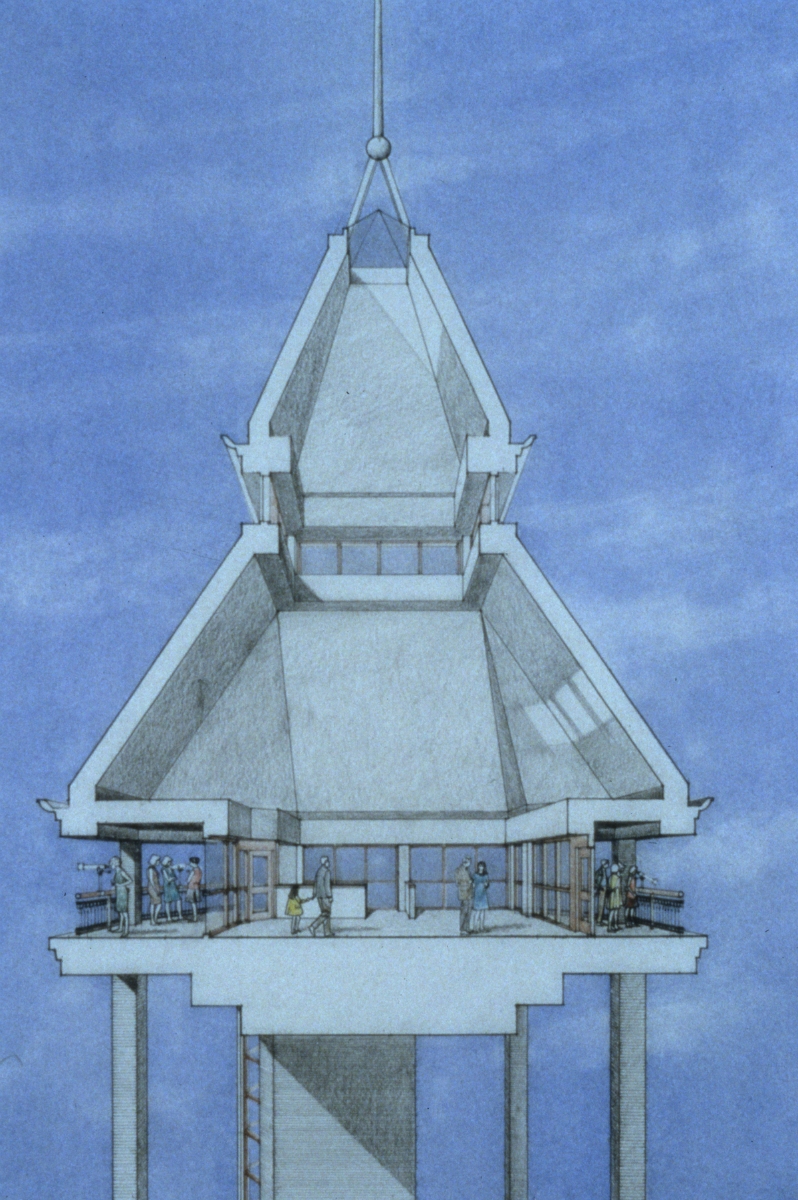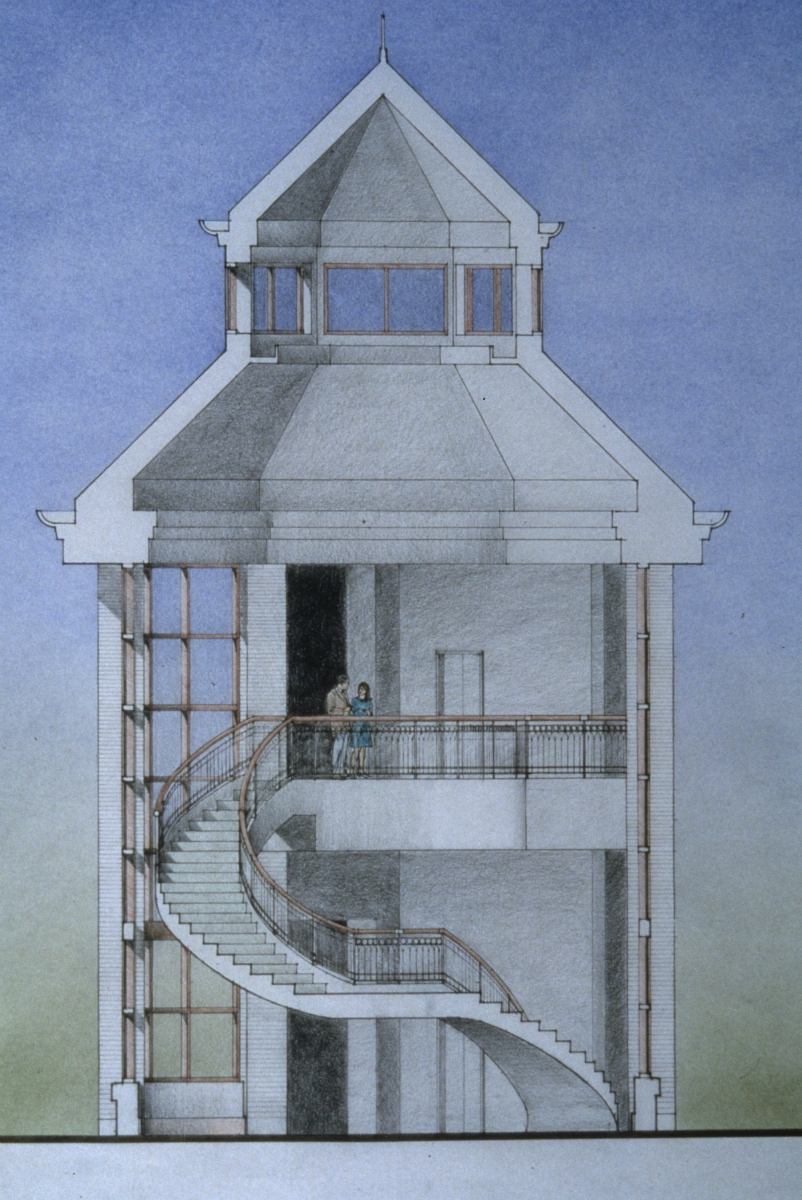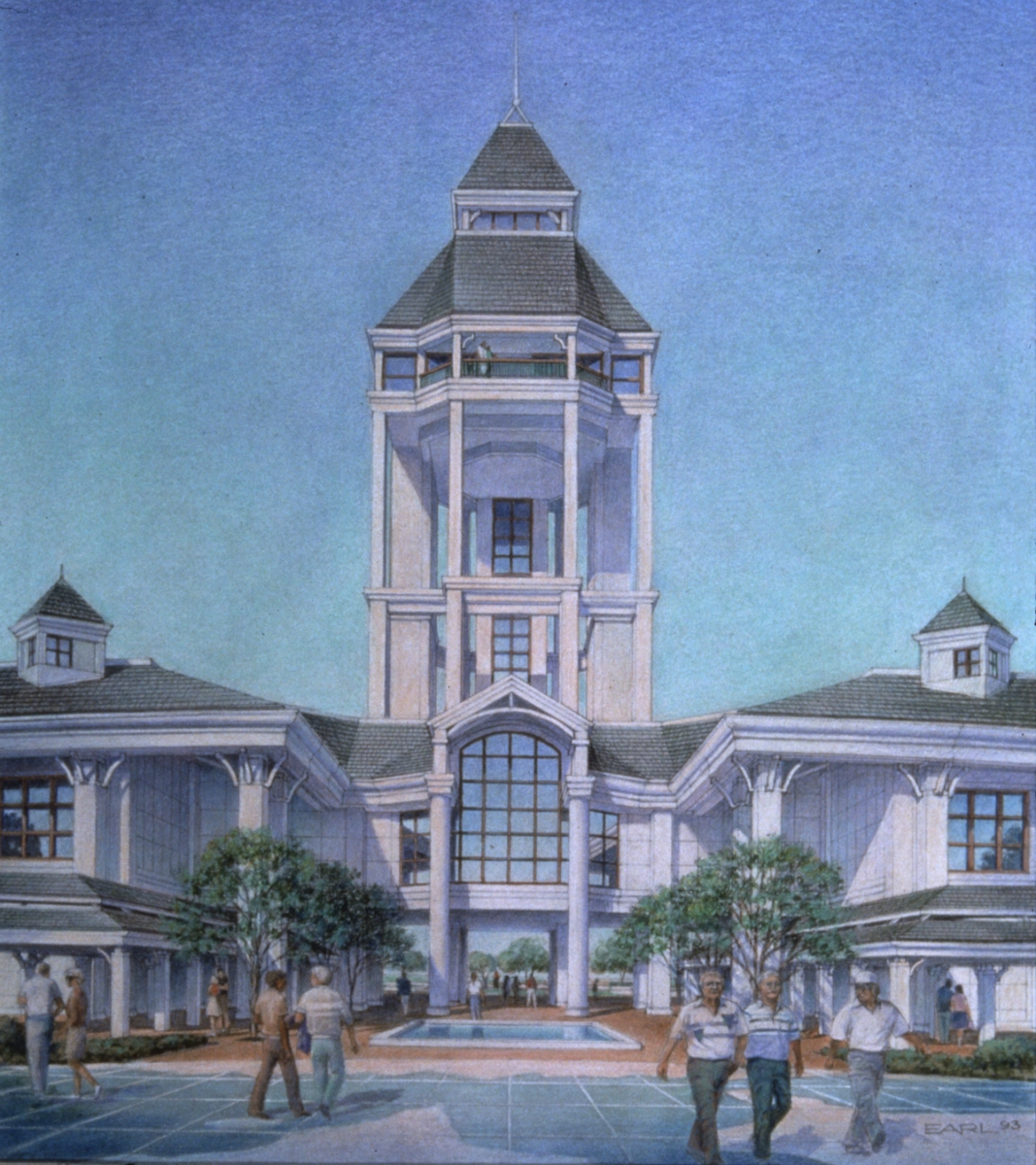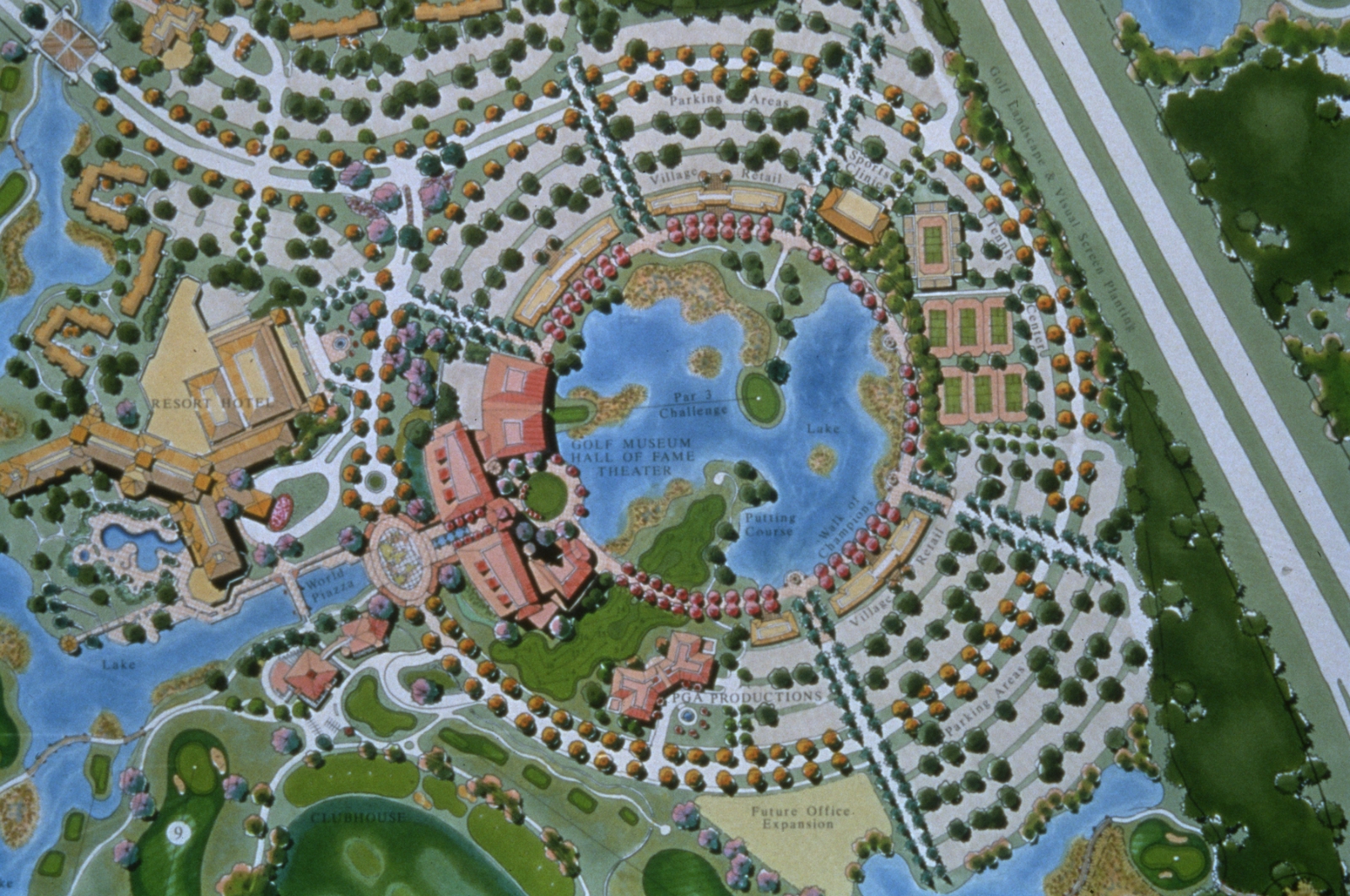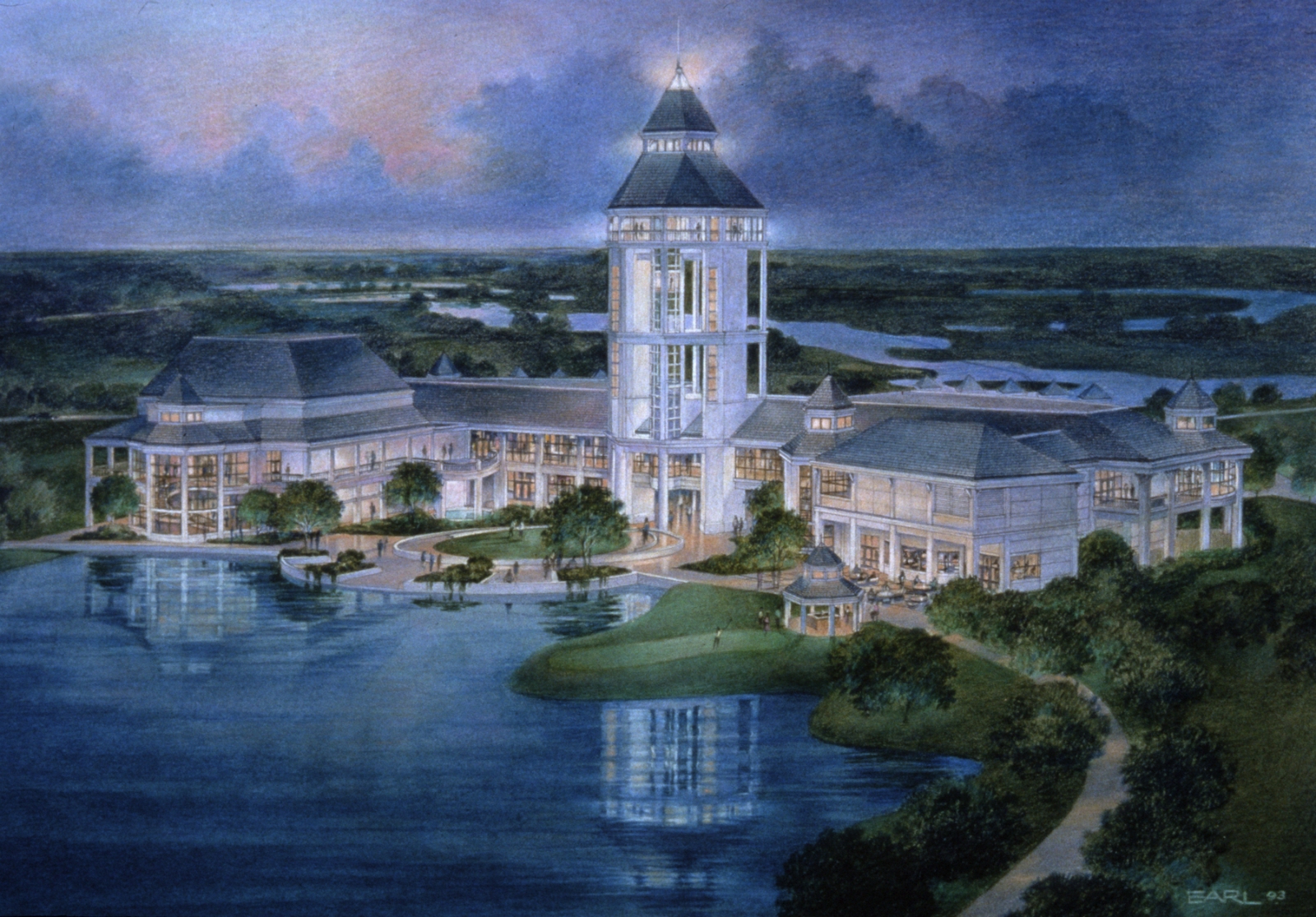World Golf Hall of Fame
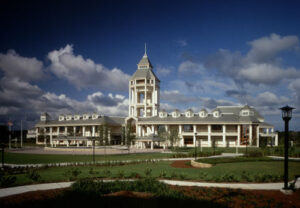
Location: St. Augustine, FL
Role: Architect & Museum Planner for new Museum and Hall of Fame; Led team of engineers and specialist museum consultants; Collaborated with exhibit design firm (Ralph Applebaum Associates)
Program: Immersive history exhibits, interactive exhibits, theaters, 300-seat IMAX Theater, collections storage, lobby, cafe, gift shop, function spaces, exhibit support, and offices
Building Area: 80,000 sf
Status: Opened in 1998
Description:
The World Golf Hall of Fame is the centerpiece of a major new development in northeastern Florida, near St. Augustine and just off of interstate I-95. This new sports museum provides a unifying home to honor all of golf’s greatest players, contributors and their accomplishments. Our vision for this exciting project included recommendations to distinguish it from a more typical sports hall of fame by having a strong focus on interactive and participatory golf exhibits, by adding a large format IMAX Theater, and by the creation of a tower to symbolize the Hall of Fame building and physically elevate the actual shrine that recognizes the inductees. Our design was completed with the participation by all of the world’s major golf organizations including the PGA TOUR, the Ladies Professional Golf Association (LPGA), the Professional Golfers Associations of America (PGA), the United States Golf Association (USGA), the Augusta National Golf Club, and the Royal & Ancient Golf Club of Scotland (R&A).
The World Golf Hall of Fame is the feature of the 440-acre World Golf Village, and is at the head of a central lake that is also ringed by a major resort hotel and convention center, a complex of dining and retail stores, and the PGA TOUR’s media production headquarters. It includes 25,000 sf of golf exhibits, with many interactive exhibits, multi-media presentations and a video wall, a “hall of fame” induction area, a 300-seat IMAX Theater, a cafe, a retail store, administrative offices, and facility service areas. Outdoor participatory golf activities are integrated into the adjacent site including an 18-hole putting course and a par-3 challenge hole with its green in the middle of the central lake.
The 190-foot tall tower is the “icon” for the project and the entire World Golf Village. It is visible from I-95 and above the treetops from almost anywhere in the village, and is also on axis with the 18th green of the adjacent championship golf course. The 110-foot observation level provides extraordinary 360o views of the village and lake below, and is accessed via a glass-enclosed elevator. Its unique stainless steel and crystal sculpture symbolically honors each hall of fame inductee.
As the centerpiece building, the World Golf Hall of Fame established the architectural character and style for all of the other major buildings on the site. The architecture is conceived to be both historic and playful as an expression of the rich history, tradition, and joy of the game of golf. During the design phase, then PGA Tour commissioner Deane Beamen suggested imagery of 19th century Victorian resort hotels, and also southern “low country” mansions. The design seeks to combine the exuberance of the Victorian style’s fanciful roof forms with more stately broad overhangs, colonnades and deep balconies.
A major objective of the design is to maximize the experience of the landscape, thereby symbolizing the experience of a golfer with the outdoor environment. Outdoor spaces flow uninterrupted through the center of the facility, making it possible for visitors to walk through the complex without going indoors. This architectural device allows the building to function as the central gateway to World Golf Village. Expanding upon the “village” concept, each of the main building components (the exhibits, theater, cafe and store) has their own distinct entrance off of a central courtyard.
Our building design also features concepts and unique details to further enhance its connection to the game of golf. The 18-peaked roof forms of various sizes and shapes represent the 18 holes in a round of golf. Sweeping building curves symbolize the golf swing and its arc. The custom designed railings used throughout the building recall the ornamental cast-iron railings of historic southern architecture and contain abstract images of blades of grass and groups of 18 golf balls on golf tees.
Our services for this project included preparation of the initial Feasibility Study in 1991, collaboration with the land planners in the master planning the World Golf Village site, assisting in establishing and reviewing the architectural design for all the major buildings around the central lake, exhibit coordination, signage design, and providing complete architectural services for the World Golf Hall of Fame building. The building and World Golf Village opened to the public with a grand celebration in May of 1998.

